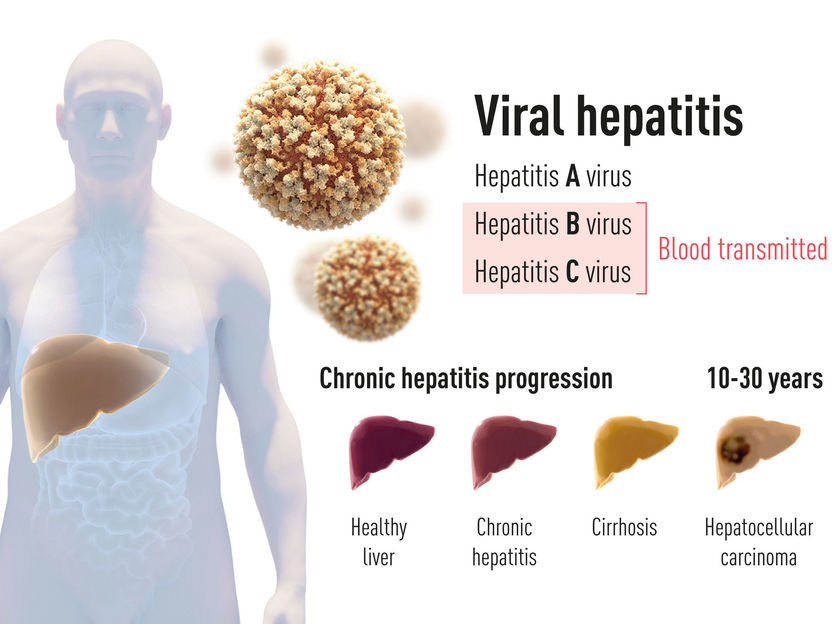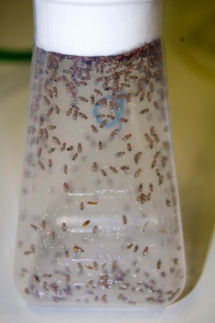Primate's scent speaks volumes
Lemur's scented name tag indicates kin relationships
Perhaps judging a man by his cologne isn't as superficial as it seems.

A male ringtail lemur rubs one of his scent glands on a tree trunk
David Haring, Duke Lemur Center
Duke University researchers, using sophisticated machinery to analyze hundreds of chemical components in a ringtailed lemur's distinctive scent, have found that individual males are not only advertising their fitness for fatherhood, but also a bit about their family tree as well.
"We now know that there's information about genetic quality and relatedness in scent," said Christine Drea, a Duke associate professor of biological anthropology and biology. The male's scent can reflect his mixture of genes, and to which animals he's most closely related. "It's an honest indicator of individual quality that both sexes can recognize," she said.
Lemurs, distant primate cousins of ours who split from the family tree before the monkeys and apes parted ways, have a complex and elaborate scent language that until recently was completely undiscovered by humans. Drea said it's language that is undoubtedly richer than we can imagine.
"All lemurs make use of scent," she said. "The diversity of glands is just amazing."
Ringtailed males have scent glands on their genitals, shoulders and wrists, each of which makes different scents. Other lemur species also have glands on their heads, chests and hands. Add to these scents the signals that can be conveyed in feces and urine, and there's a lot of silent, cryptic communication going on in lemur society.
Wearing a scent-based nametag declaring one's genetics is probably useful in avoiding aggression with closely related males, Drea said. It's also quite likely to help prevent inbreeding by signaling family relationships to females, but the research to prove that is still ongoing.
For this study, Drea and postdoctoral fellows Marie Charpentier and Marylène Boulet focused solely on male ringtailed lemurs living at the Duke Lemur Center.
The males have a gland and spike on each wrist that is used to scratch and mark saplings with highly aromatic scents. A pair of glands on the shoulders "like misplaced nipples" manufacture squalene, a scent molecule that works like glue to keep the more aromatic compounds in place longer. Males can be seen dabbing the wrist gland on the chest gland and then scratch-marking. The wrist glands are also central to the "stink fighting" of ringtails, in which they rub the glands along the length of their bushy tails, and then foist them into each others' face to express dominance.
Most importantly, the male also has a scent gland on his scrotum that becomes critical to marking territory and advertising fitness during mating season. He does a handstand and rubs this gland directly onto a tree trunk to let any interested lemurs know who he is and what he's made of.
Scent not only speaks volumes, it's physiologically expensive to make, Drea said. When a lemur is ill or socially stressed, its scent changes dramatically. "If he loses his signals, it's quite likely its because he's less genetically fit," Drea said. "And his sexual or social partners can know that."
Female ringtailed lemurs have just one scent gland in the genital area, but their scent is more complex than the males'. Via scent, females may advertise not only their fertility, but the presence of a pregnancy and how far along it is, Drea said.
To a human, a lemur has a sort of musky scent. "In its little vial, the sample smells just terrible," said Charpentier, the postdoctoral fellow who deciphered the genetics and is now examining the behavioral response to these scents.
But under a gas chromatograph and mass spectrometer, postdoctoral fellow Boulet found that the powerful musk resolves into at least 203 different chemical compounds in a complex mix that has been found to vary not only by season, but by an individual's genetics as well. Boulet conducted this analysis after collecting cotton swabs of scent from the scrotums and other parts of 19 male lemurs throughout the seasons.
These findings fit with work done on how people feel about the odors individual humans leave behind on a T-shirt and sheds more light on Charles Darwin's theories about sexual selection being one of the drivers of evolution, Drea said. In both cases, there is some subtle signaling in scent that apparently helps govern mate choice or nepotism, even when humans' meager sense of smell isn't conscious of it, she said.
Most read news
Topics
Organizations
Other news from the department science
These products might interest you

Stellar Mass Spectrometer by Thermo Fisher Scientific
High-Sensitivity Mass Spectrometer for Fast Biomarker Validation
Boost lab efficiency with 10x improved quantitation and multi-analyte automation

BIOS ANALYTIQUE - Soluciones de Renting y Leasing para laboratorios by Bios Analytique
Specialists in the rental and leasing of scientific equipment for laboratories throughout Europe
Whether you have an unexpected requirement or limited budget, we have the perfect solution for you

Get the life science industry in your inbox
By submitting this form you agree that LUMITOS AG will send you the newsletter(s) selected above by email. Your data will not be passed on to third parties. Your data will be stored and processed in accordance with our data protection regulations. LUMITOS may contact you by email for the purpose of advertising or market and opinion surveys. You can revoke your consent at any time without giving reasons to LUMITOS AG, Ernst-Augustin-Str. 2, 12489 Berlin, Germany or by e-mail at revoke@lumitos.com with effect for the future. In addition, each email contains a link to unsubscribe from the corresponding newsletter.
Most read news
More news from our other portals
See the theme worlds for related content
Topic world Gas chromatography
Gas chromatography is an essential method in analytical chemistry for the separation and analysis of volatile compounds. Due to its high resolution and sensitivity, it has become firmly established in areas such as environmental analysis, food chemistry or forensic science. GC provides precise and reliable results and enables deep insights into the chemical composition of samples.

Topic world Gas chromatography
Gas chromatography is an essential method in analytical chemistry for the separation and analysis of volatile compounds. Due to its high resolution and sensitivity, it has become firmly established in areas such as environmental analysis, food chemistry or forensic science. GC provides precise and reliable results and enables deep insights into the chemical composition of samples.
Topic World Mass Spectrometry
Mass spectrometry enables us to detect and identify molecules and reveal their structure. Whether in chemistry, biochemistry or forensics - mass spectrometry opens up unexpected insights into the composition of our world. Immerse yourself in the fascinating world of mass spectrometry!

Topic World Mass Spectrometry
Mass spectrometry enables us to detect and identify molecules and reveal their structure. Whether in chemistry, biochemistry or forensics - mass spectrometry opens up unexpected insights into the composition of our world. Immerse yourself in the fascinating world of mass spectrometry!
Last viewed contents
Raptor Pharmaceuticals and TorreyPines Therapeutics Receive Stockholder Approvals to Merge - Merger to Create NASDAQ-Listed Biopharmaceutical Company named Raptor Pharmaceutical Corp.

Nobel Prize for Physiology or Medicine 2020 Announced - Nobel Prize awarded to Harvey J. Alter, Michael Houghton and Charles M. Rice for the discovery of Hepatitis C virus
PharmAthene and SIGA Technologies sign definitive merger agreement
PerkinElmer announces third quarter results - GAAP Revenue of $548 million versus $563 million in the comparable prior period

Glox Therapeutics Secures £4.3M Seed Funding to Develop Precision Antimicrobials Targeting Drug-resistant Bacteria - Spin-out from the Universities of Glasgow and Oxford

Doped by food - Dopamine release regulates our eating behaviour

Turning fallen leaves into sustainably made paper - Ukrainian scientist selected as a finalist for the Young Inventors Prize 2024

Merck Celebrates Topping-Out Ceremony for New Membrane Production Plant - Investment of more than € 140 million creates approximately 55 new jobs























































